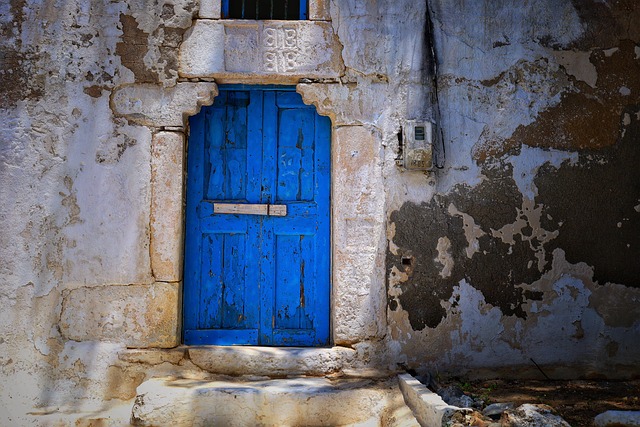Metal accent walls are a key element in today's mixed-material design trend, combining wood, glass, stone, and metal to create unique, warm, and modern spaces. These walls add depth, contrast, and versatility, seamlessly integrating with diverse materials while offering both subtle elegance and dramatic statements. Balancing textures and finishes creates harmonious, captivating environments that transform spaces into visually appealing and uniquely expressive areas.
In today’s design landscape, seamless integration of diverse materials is a game-changer. Mixed-material designs offer a modern aesthetic that blends wood, glass, and stone seamlessly with metallic accents, creating depth and contrast. This article explores this trend in detail, focusing on the role of metal accent walls in enhancing visual interest. From understanding the basics to practical applications, we’ll guide you through the process of crafting stunning mixed-material spaces, highlighting the beauty of combining contrasting elements.
Understanding Mixed-Material Designs: A Modern Esthetic
In today’s design landscape, mixed-material designs have emerged as a vibrant and dynamic aesthetic that pushes the boundaries of traditional interior or architectural styles. By seamlessly integrating wood, glass, and stone with metal accent walls, designers are creating spaces that exude both warmth and modernity. This blend of materials offers an opportunity to achieve visual depth, texture, and contrast, resulting in unique and visually appealing environments.
Metal accent walls play a crucial role in this modern approach, serving as the linchpin that binds these diverse elements together. They can add a touch of industrial chic or contemporary elegance, depending on the finish and design. Whether it’s sleek stainless steel, rustic copper, or textured brass, metal accents enhance the overall visual narrative, creating a harmonious fusion of old and new, hard and soft, that defines today’s mixed-material designs.
The Role of Metal Accent Walls in Creating Depth and Contrast
Metal accent walls play a pivotal role in mixed-material designs, serving as a dynamic element that introduces depth and contrast. Their sleek, modern lines or textured, industrial finishes provide a stark contrast to the natural warmth of wood, tranquility of glass, or elegance of stone. This interplay creates visual interest, drawing the eye across the space and adding dimension to otherwise flat surfaces.
By strategically placing metal accent walls, designers can define spaces, create focal points, and establish a sense of balance within a room. Whether crafted from stainless steel, brushed aluminum, or weathered brass, these walls offer versatility in style and color, allowing for customization that complements diverse design aesthetics. They seamlessly integrate with surrounding materials while asserting their presence, making them a key component in achieving harmonious mixed-material designs.
Integrating Wood, Glass, and Stone with Metallic Elements
In the realm of mixed-material design, the integration of wood, glass, and stone with metallic elements creates a harmonious symphony of textures and aesthetics. Metallic accent walls serve as a versatile canvas, allowing for both subtle elegance and dramatic statements. When combined with natural materials like wood and stone, metal can enhance their beauty while introducing a modern edge. For instance, a sleek metal accent wall behind a traditional wooden fireplace not only adds a contemporary touch but also frames the space beautifully.
Glass acts as a transparent bridge between these elements, enabling light to flow freely while creating visual interest. Incorporating metallic hardware or trim on glass doors or shelves can elevate the design, establishing a seamless connection between wood, stone, and metal. This fusion of materials offers endless possibilities for creative expression, ensuring that spaces are not only visually appealing but also uniquely expressive of individual tastes.
Design Considerations for Seamless Material Transitions
When integrating wood, glass, or stone with metal accent walls, the key lies in creating seamless transitions that blend materials harmoniously. Designers should consider the visual weight and texture of each element to ensure a balanced aesthetic. For instance, pairing sleek metal with rustic wood can create a striking contrast, while seamlessly merging glass and stone adds luminosity and depth.
To achieve smooth transitions, it’s crucial to align material patterns and finishes thoughtfully. Metal accent walls can be toned down or enhanced with complementary textures from other materials, preventing visual jolts. Careful planning ensures that the final design looks cohesive, modern, and aesthetically pleasing, transforming mixed-material spaces into visually captivating environments.
Practical Applications and Inspiration for Mixed-Material Spaces
In practical applications, mixed-material designs offer a versatile and dynamic aesthetic that enriches both residential and commercial spaces. Incorporating wood, glass, and stone alongside metal accent walls creates depth, visual interest, and a unique atmosphere. For instance, a modern kitchen might feature marble countertops juxtaposed with wooden cabinets and stainless steel appliances, harmoniously blending textures and finishes.
Inspiration for these mixed-material spaces can be drawn from diverse sources, including global architectural styles, natural landscapes, and contemporary art movements. Think of a living room inspired by Scandinavian design, where dark wood floors are paired with crisp white walls and striking metal accent walls, evoking a sense of warmth and modernity. This blend of materials not only enhances visual appeal but also allows for creative expression, catering to individual tastes and lifestyles.
Mixed-material designs offer a dynamic and versatile approach to interior aesthetics, seamlessly blending wood, glass, stone, and metal to create visually stunning spaces. As evidenced by the integration of metal accent walls, these combinations add depth, contrast, and modern elegance. By carefully considering material transitions and drawing inspiration from practical applications, designers can craft mixed-material spaces that are both aesthetically pleasing and functional, ensuring a unique and indelible design impact.
